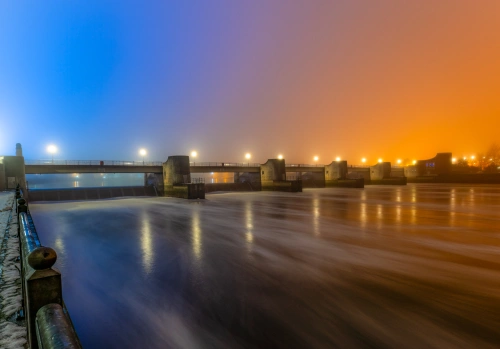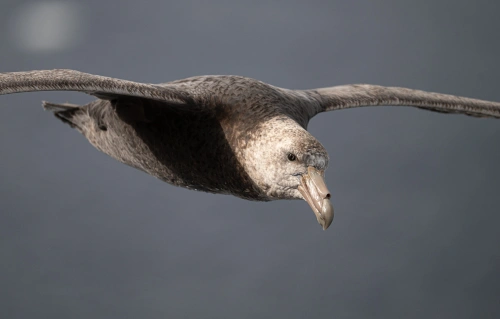Z8 Review
I recently became the proud owner of a Z8, my upgrade from the Z6 II. Anyone can read the technical details and specifications on the Internet. I simply want to go into the individual advantages and disadvantages that I notice during use. The website will therefore expand over time.
The first thing I noticed when unpacking the camera was the big difference in weight and size compared to the Z6 II. The Z8 is slightly smaller than a D500. You have to get used to the new basic weight and of course you need a bit more space in your rucksack.
I find the various memory slots for individual functions and the swivel display, which, unlike the Z6II, adds a further axis of rotation, very cool.
Even during the first tests, it was noticeable that a Sony XQD with a write rate of 400 MB/s is not sufficient for 20 frames per second when longer shooting bursts take place. After a few seconds the buffer of the Z8 is full. I will therefore buy a new and larger CF-Express from either Delkin or LEXAR. In general, however, you have to ask yourself the question: do I need 20 pictures per second and would I normally press the shutter button continuously? In practice, you are more likely to shoot with shorter presses and short pauses. For everything else, there is the video function, which runs up to 8 K and 30 FPS or enables multiple slow motion with a lower resolution.
Speicherkarte
Die Z8 hat zwei Slots. Der erste ist für CFExpress Karten der zweite für SD. Das zweite bildet eher ein Backup da 95 MB/s selbst bei schnellen SD Karten bei weitem nicht für die hohen Informationsdichten von Bildserien und Videos ausreicht. Nach etwa 30 Bildern mit 20 Fotos pro sekunde in Raw (30 MB pro Bild), kommt die Kamera nach ungefähr 30 Bilder ins Stocken. Damit der interne Pufferspeicher der Z8 nicht voll läuft, braucht es Schreibraten von 1.2 GB/s. Dafür hab ich mir eine LEXAR Professionell CF Express 1 TB geholt und getestet. Mit 1900 MB/s gibt es weder bei hochauflösenden Videos noch bei langen Bildserien irgendwelche Unterbrechungen. Großer Vorteile ist auch die Downloadgeschwindigkeit von der Karte. Die Fotos sind Ruck Zuck auf dem PC.
Aktuell kommen bei den Fotosessions pro Tour bis zu 2000 Bilder und ein paar Videos rum. Das sind rund 100 GB an Daten. Da ich regelmäßig Fotos und Videos runter ziehe und einen PC dabei habe, nutze ich die 1 TB meistens nicht vollständig aus. Für die meisten sollten also 128 bzw 256 GB reichen. Da ich jedoch auch mehrer Tage die Kamera benutze ohne die Bilder zu sichern, machen für mich, gerade bei der Aufnahme vieler Videos solche Speicherkapazitäten durchaus Sinn.
Nachtaufnahmen

The first tour with the camera went to the Weser weir in Bremen in the evening in fog immediately after the new device arrived. The high humidity caused the colors of the water power plant and the weir to disperse in a very interesting way.
When editing the photo, I quickly noticed that Lightroom takes a little longer to load the image. No wonder with 45 MP. The colors and contrasts are good (which is of course also due to the Sigma 14-24mm f/2.8 DG HSM). Of course, noise still comes into play with long exposures, especially in darker areas. But this can be controlled quite well. At first glance, I don't see any disadvantages compared to the Z6II.
Focus Shift
At the moment it's not so much the macro season. I would like to know whether there is a difference in the speed of focus shifting between the Z6 II and the Z8. If the Z8 is faster in processing and setting the focus, this results in a shorter continuous shooting time. This is an advantage over subjects that may change quickly. I chose the Sigma 14-24mm f/2.8HSM as an example lens. I chose an increment of one and set the focus ring to the stop, so that 33 images are required for a full cycle. On the Z6 II, the lens takes around 18 seconds to travel from one end of the focus to the other. On the Z8 it is only 13 seconds. The next test will be with the 105 mm f/2.8G IF-ED VR.
As announced, so also carried out. At 105 mm, the Z6 II needs 135 seconds, the Z8 64 seconds for 300 steps with increment 1. The Z8 is thus even twice as fast.
Animal Tracking

Von Anfang Feburar bis Mitte April 2024 konnte ich die Z8 während der Polarstern Fahrt PS141 in die Ostantarktis in vielen verschiedenen Situationen testen. Besonders Vögel kamen dem Schiff sehr nahe. In unterschiedlichsten Wetterlagen ließ sich die Performance des Animal Trackings mit Hintergründen wie Wasser, Himmel oder Eis testen. Bei genügend Sonnenlicht und Kontrasten arbeitet die Nachverfolgung extrem präzise. Kommen die Tiere sehr Nahe und fliegen parallel vorbei, liegt der Fokus leider manchmal auf dem zugewandten Flügel und nicht auf dem Kopf. Das würde sich über die Position und Wahl des Messfeldes vorraussichtlich korrigieren lassen, erfordert aber eine Menge Übung. Besonders Tiere, die sehr ähnliche Farben wie der Hintergrund haben können bei wenig Licht nicht sauber getracked werden. Das ist aber nicht weiter verwunderlich, da man auch oft mit bloßem Auge den Tieren schlecht folgen konnte.
Z8 on lenses
Sigma 150-600mm 1:5-6.3 DG OS HSM C
I was curious to test the Z8 with the 150-600mm C from Sigma. With the D750 or even the Z6II, the lens works relatively well and finds the right focus in good light conditions/contrast, but if the subject moves quickly, the lens sometimes leaves something to be desired. During a transit with the Polarstern to South Africa, I repeatedly took blurred pictures when observing Atlantic Yellow-Nosed Albatross or photographing birds of prey. You notice very clearly that the lens takes too long to adjust quickly to new situations when moving the focus from the short end to the long end. The Z8 does not change this performance, neither positively nor negatively.
Video recordings
For expeditions, trips and tours, there is always the question of which video settings make sense for me. There are many different resolutions, frame rates and codecs to choose from. Everything has its pros and cons. The topic is relatively complex. The resolution determines the level of detail. The highest value is not necessarily the best. High resolutions require a lot of storage space and are more sensitive to noise. Furthermore, it is of little use if I cannot play the videos (because the hardware is too weak) or there are hardly any devices that can display such resolutions. So it's a question of the application. From the movies, series and videos and today's good standard, I have opted for 4 K as a sensible resolution. You won't usually see higher resolutions in cinemas either. By the way, 8K would be the maximum possible with the Z8.
When it comes to frame rates, at least 30 FPS, or even better 60 FPS, makes sense for nature and fast shots. Scope for slow motion and smooth motion sequences. As with the higher resolution, higher frame rates always lead to more storage space being required and the necessary hardware for playback.
And finally, what I personally find most interesting is the codec. The Z8 offers N-Raw (12 bit), ProRes (10 and 12 bit), H.265 (10 and 8 bit) and H.264 (8 bit). A high bit rate means lots of colors. But now it's getting exciting. I currently have a Sony 64 GB with 400 MB/s write speed in my Z8. With the initial values of 4K and 60 FPS, N-Raw cannot be written. The data rate would be too high. The memory card can't do that. The same applies to ProRes RAW HQ 12Bit. The card only runs from ProRes 422 HQ 10 bit. And exactly 15 seconds of video material can be recorded. After that, the camera's buffer is full and the file must first be written. 15 seconds of video then have a size of 3.2 GB (black frame, daytime recording at least twice as much). With 64 GB, this means a maximum of 5 minutes of video time. Anyone can quickly work out for themselves how quickly a 1 TB CF Express card would be full. H.265 with 10 bit already delivers almost 20 minutes with a 64 GB memory card. H.265 with 8 bit delivers around 22 minutes and H.264 with 8 bit no longer supports 4K.
H.265 and 10 bit is my favorite here. Although this codec requires more hardware, a test with 30 seconds of recording results in around 200 MB to 1 GB, depending on how much information needs to be written. This results in a recording time of between 160 and 32 minutes on 64 GB. However, this also means that at least 6 hours of video material is possible for 1 TB.
For all video runtimes, a lower value naturally applies with more FPS or higher resolution. So depending on how long you are on the road and the size of the hard disk, I think h.265 with 10 bit at 4K and 60 FPS makes the most sense.
Post Processing
Mit einer Aufösung von 45.7 MP lassen sich bereits Einzelbilder von erstaunlicher Qualität erstellen. Oftmals gehen mit Weitwinkeln viele Details verloren. Ich bediene mich dabei der Möglichkeit ein Motiv in Einzelaufnahmen abzurastern, um daraus dann ein Panorama zu erstellen. Damit lassen sich die Dimensionen und Feinheiten gewaltiger Landschaften wie Eisbergen oder Eisschilden und Gletschern viel besser erhalten. Das man aber nur Sinn, wenn das Bild auch entsprechend groß ausgedruckt wird bzw. bspw. Bildschirme eine hohe Auflösung haben.

KPanoramas können schnell 100 MP überschreiten. Mein aktuell größtes mit der Z8 hat 400 MP. Das stellt für die Hardware eine enorme Belastung dar. Während auf meinem PC bereits einzelne Bilder kurze Nachladezeiten zu Darstellung brauchen und die Nachbearbeitung deutlich mehr stockt, kann ich mit den Panoramas kaum noch richtig arbeiten, ohne das Lightroom über viele Sekunden bis Minuten ins stocken gerät. Auch das Zusammenfügen der Bilder kann sich von wenigen Minuten bis zu Stunden ziehen und enorme Ressourcen wie lokalen Speicher, RAM und CPU beanspruchen. Wer also mit Kameras wie der Z8 arbeiten möchte, muss sich darüber im klaren sein, die Hardware für die spätere Bildbearbeitung mitzubringen.
Aktuelle PC Hardware: Intel(R) Core(TM) i7-4790 CPU @ 3.60GHz, 3601 MHz, 4 Kern(e), 8 logische(r), 32 GB RAM und NVIDIA GTX 970.